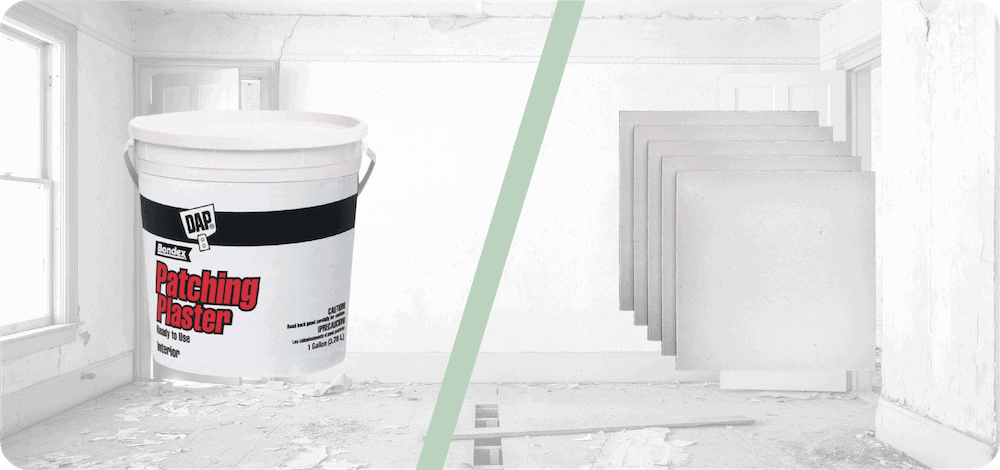Plaster vs Drywall: What’s the Difference?
-
Pete Ortiz
- Last updated:

Plaster and drywall. On the surface, they seem very similar. And in application, they actually are. Both are components of the walling process. Both have been around for many decades and have many fans to their name.
But what makes these two materials different? And which should you choose next time you have a DIY project on your hands?
These are the questions that we will be taking a look at today. Read on to find out the difference between plaster and drywall!
Plaster
Plaster is a walling material that you often find in older home construction. You might recognize a plaster wall on sight for the textured look that the material leaves behind. It is considered elegant by many, and indeed there is an artisanal element to its application.
Plaster is lathered on in layers and it requires a significant amount of labor. For that reason, it can be costly to have done professionally (which is actually why drywall has become such a popular and common material).
You don’t just wake up one day and decide to start laying plaster. It’s a process of learning that may take a significant amount of time to truly master.

That said, plaster is about as easy to use as it ever has been these days. Plaster can be purchased premixed now which makes it easier to know that you are using the right materials for your needs.
As a material, plaster is simultaneously very hard and quite brittle (meaning it will be challenging to drive a nail through, and likely to splinter in the process). Of course, you can still hang pictures up on plaster, but it does require an enhanced degree of mindfulness.
Plaster being very thick, it is usually very good at keeping noise pollution from outside out of your home, but it is harder to insulate as well.
For a long time, this was the most prominent way to build a wall. However, when drywall hit the scene (circa World War 2) use of plaster in walling was sharply reduced.
Find a drywall specialist in your area, and get free, no-commitment estimates for your project.Consult a DRYWALL expert

Drywall
Then there is drywall. Less expensive than plaster, and far easier to install, this material gives the profile of your wall a much smoother texture.
Because it takes about a third of the labor that plaster requires it is usually pretty cost-effective, and in fact, it has been the walling material of choice for decades now.
Drywall is made up of gypsum boards that can be easily mounted to the frame of your room.
These boards are available in a wide range of different thicknesses which will help you to optimize the soundproofing efficiency of the material. Naturally, thicker boards will be better at keeping sound out and insulating your home.
Insulation, in general, is actually significantly easier with drywall than it is for plaster, simply because modern insulation is better suited for this material.
Additionally, drywall is also going to be much easier for mounting pictures, posters, etc. Drywall is soft enough that you can pierce it with the end of a pin as needed.
Of course, by extension of that fact, it is also far less durable.
See also:
- What’s the fastest and most efficient way to cut drywall? We decided to find out
- Best Way to Cut Drywall – Which Tool to Use? – Reviews & Buyer’s Guide
Which Material To Choose?
If you are considering either of these materials for a building project, you now have lots of food for thought. On the one hand, it is hard to match the elegance of plaster. On the other hand, there are quite a few reasons that it isn’t used very much anymore. It’s expensive, it takes a long time and lots of skill to apply, and it isn’t very energy efficient. If you do value beauty and elegance over cost-insulating properties, then plaster is a good material to use.
However, chances are pretty steep that most people will be reaching for the drywall. It’s just a sensible material for the modern era of building. Low maintenance, cost-effective, and energy-efficient. There is a lot to like about this material.
Of course, at the end of the day, both materials have many years of high performance to their name. You just need to decide what you want out of your walls. Simplicity and affordability, or a snazzy look that is a true blast from the past.
It’s worth mentioning that we recently compared Polycrylic and Polyurethane. Click here to read that post.
- Related Read: Mortar vs. Stucco: What’s the Difference?
Featured Image Credit: Riverview Homes Inc, Wikimedia
Contents


